Ron Bechet
b. 1956, New Orleans
Lives in New Orleans
VENUE
Newcomb Art Museum of Tulane University
Woldenberg Art Center #202, Newcomb Cir, New Orleans, LA 70118
Monday, closed
Tuesday–Friday, 10 AM–5 PM
Saturday–Sunday, 10 AM – 4 PM
NEIGHBORHOOD
About the project
Ron Bechet’s large-scale charcoal drawings are created through an intuitive, freehand process, with scenes crafted from memories of his walks in Louisiana and beyond. The titles of Bechet’s works evoke social dynamics, which would seem to contrast with the natural landscapes he depict. Yet for Bechet the interdependent relationships between trees, roots, and vines are metaphors for society.
Bechet carefully renders the ways vines wrap themselves around trees for support and access to sunlight. At times, this relationship serves both the vine and the tree. Works such as Transformation depict a harmonious symbiosis, as tree and vine both flourish. In Harriet’s Advice, the largest work on view, the base of a tree is on the verge of collapse under the weight of vines that limit its growth. The title references Harriet Tubman’s advice to President Abraham Lincoln that likened slavery to a biting snake that must be killed. The suffocating nature of the vines alludes to the failure to fully address racial oppression and subjugation-based capitalism, which ultimately prevent the growth and stability of American society. Through his immersive compositions, Bechet invites us to see history and ourselves in relationship to the beauty, power, and violence of the natural world.
About the artist
New Orleans native Ron Bechet is a former longtime chairman of the art department and a current professor at Xavier University of Louisiana, New Orleans. He earned a BA from the University of New Orleans and an MFA from Yale School of Art, New Haven, Connecticut. Bechet’s preferred medium is large-scale painting and drawing, often on a support of shaped plywood, which lends his works a sculptural quality. His paintings primarily feature Southern Louisiana inspired landscapes, and while illusions of the natural world are the focus of his imagery, they often serve as metaphors for the human condition. Undulating roots reveal lithe and supple limbs, twisted branches suggest a graceful female form, and vines cast a shadow like outstretched arms. Bechet has a playful manner of storytelling through his subjects, engaging viewers by asking them to puzzle out his meaning, and at other times making astute social commentary on various cultural themes, such as spirituality, violence, and the realities of the human condition. His work was recently featured in Tina Freeman: Artist Spaces, Ogden Museum of Southern Art, New Orleans (2017–18), and his solo exhibitions include Sense of Place, Acadiana Center for the Arts, Lafayette, Louisiana (2015), and Back to Nature, Robert Bruno Gallery, New Orleans (2005).
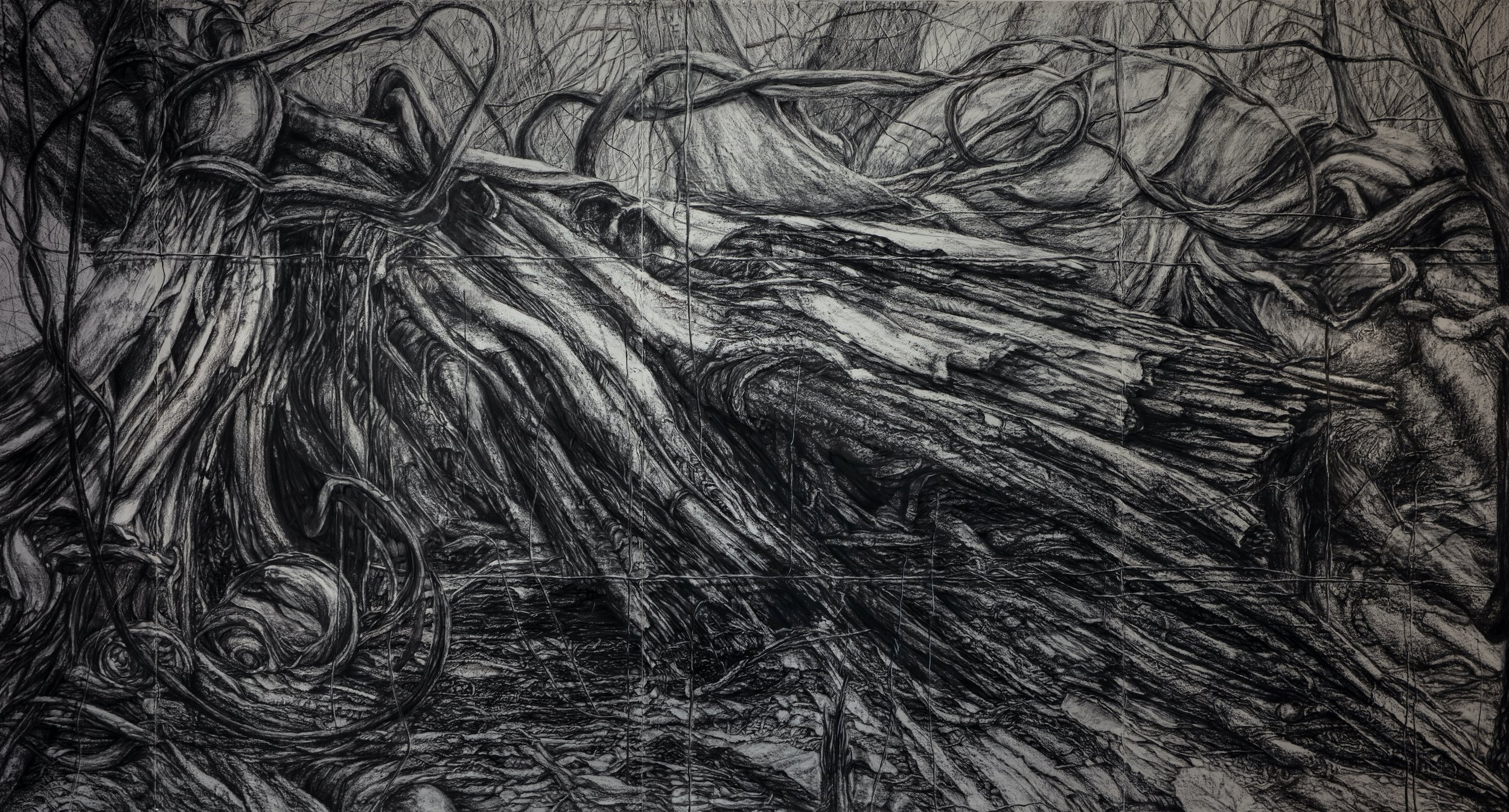



Ron Bechet, 2021–22. Installation view: Prospect.5: Yesterday we said tomorrow, 2021–22. Newcomb Art Museum of Tulane University, New Orleans. Courtesy Prospect New Orleans. Photo: Jeffery Johnston
Barbara Chase-Riboud
b. 1939, Philadelphia
Lives in Paris and Rome
venue
Newcomb Art Museum of Tulane University
Woldenberg Art Center #202, Newcomb Circle, New Orleans, LA 70118
Monday, closed
Tuesday–Friday, 10 AM–5 PM
Saturday–Sunday, 10 AM–4 PM
neighborhood
About the project
This installation presents a selection of Barbara Chase-Riboud’s sculptures and related investigatory drawings that explore alternatives to traditional Western monuments and memorials. Combining metal and textile through undulating bronze tops and weighty silk bases, Chase-Riboud challenges the nature of the hard and soft materials that make up her work. Named in honor of revolutionary figures, from Malcolm X to Mao Zedong, the works propose new ways that we might conceptualize memorials through subject as much as form, through the expressively sculpted armor-like bronze and knotted and twisted silk. Meanwhile her drawings, which include text and imagery that both mimic and depart from her three-dimensional work, offer insight into her process and the ideas that inform her sculptures.
ABout the artist
For over five decades Barbara Chase-Riboud has created abstract art with a deep sense of place, and a nuanced understanding of history and identity. Her celebrated work operates on several dichotomies that have become central to her practice: hard and soft, male and female, flat and three-dimensional, Western and non-Western, stable and fluid, figurative and abstract, powerful and delicate, brutal and beautiful, violence and harmony. In bringing these supposed poles together in her work, Chase-Riboud reveals a kind of hybrid form that is at once singular and multivalent. In 1958, Chase-Riboud developed her own particular innovation on the historical direct lost-wax method of casting bronze sculpture, and in 1967, she added fiber to these metal elements, devising the seemingly paradoxical works for which she is most renowned—sculptures of cast metal resting on supports hidden by cascading skeins of silk or wool so that the fibers appear to support the metal. Of these works are her best known, a group of twenty black steles memorializing Malcolm X and his life and leadership.
Chase-Riboud has been the recipient of numerous awards and honorary degrees. Her work has also been exhibited at institutions worldwide. Her work is in the permanent collections of the Berkeley Art Museum and Pacific Film Archive; The Metropolitan Museum of Art, New York; Ministry of Culture, France; The Museum of Modern Art, New York; New Orleans Museum of Art; the Philadelphia Museum of Art; the Smithsonian African American Museum, Washington, DC; and The Studio Museum in Harlem, New York. Chase-Riboud was the first black female to graduate with a MFA from the Yale School of Design and Architecture.
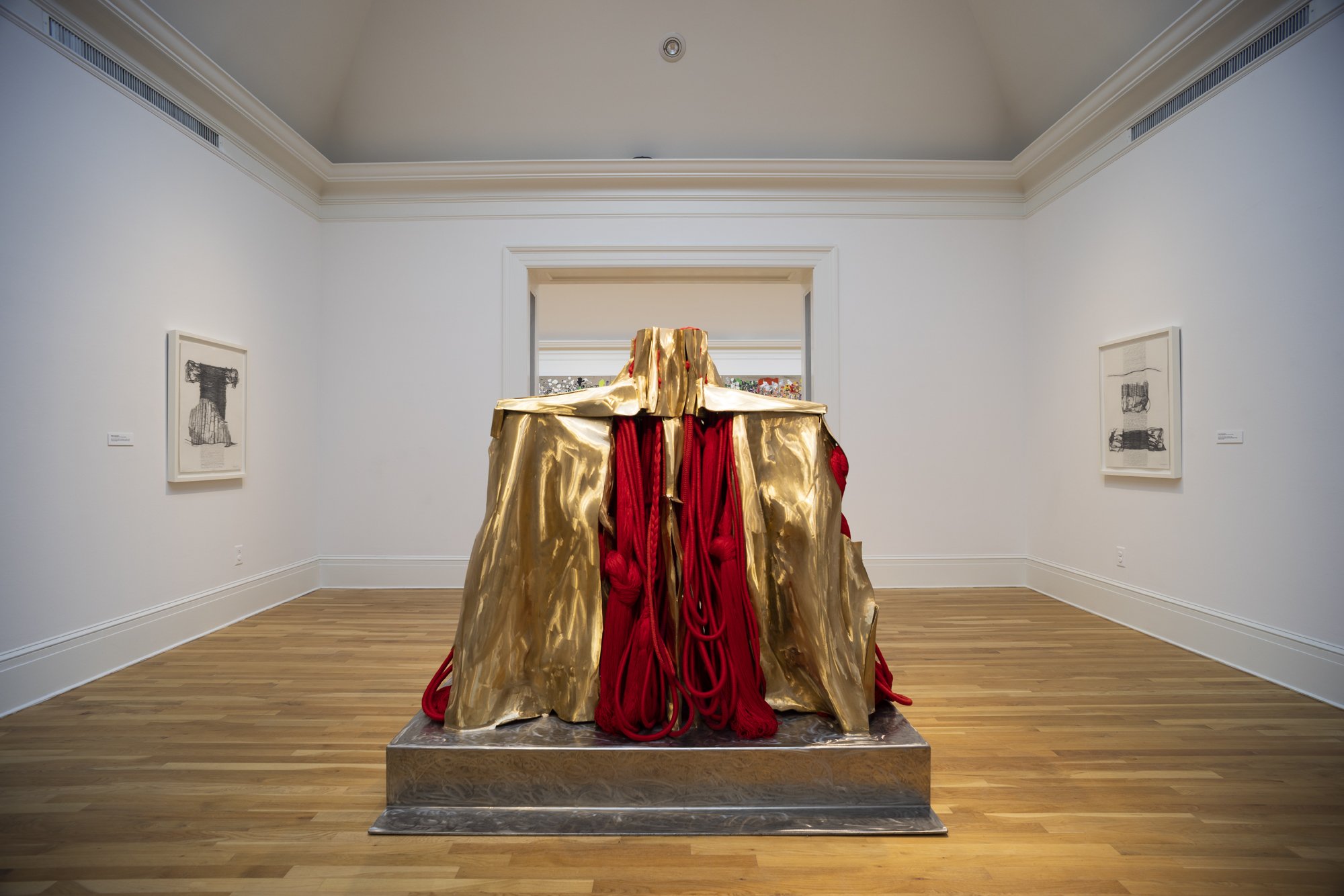
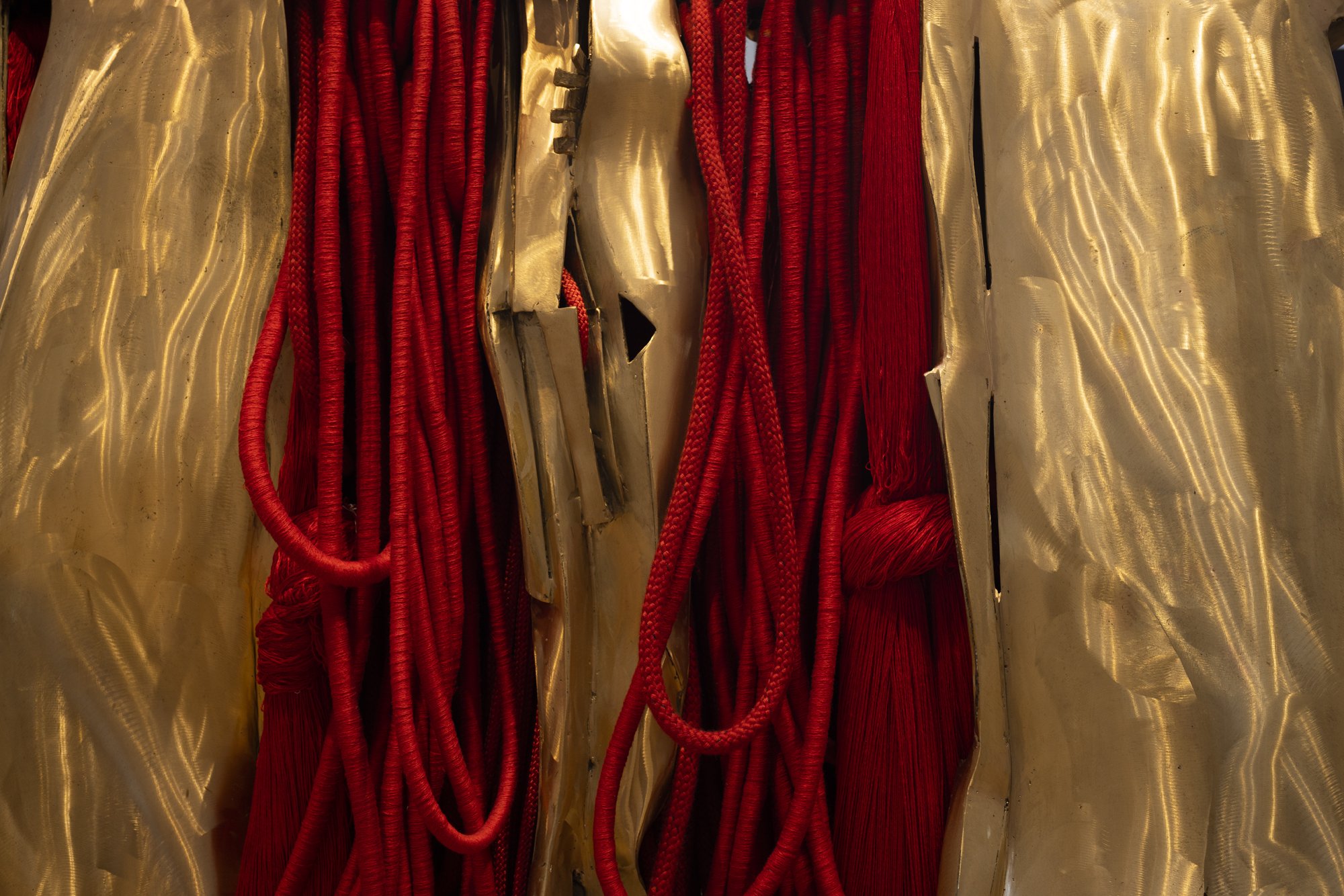
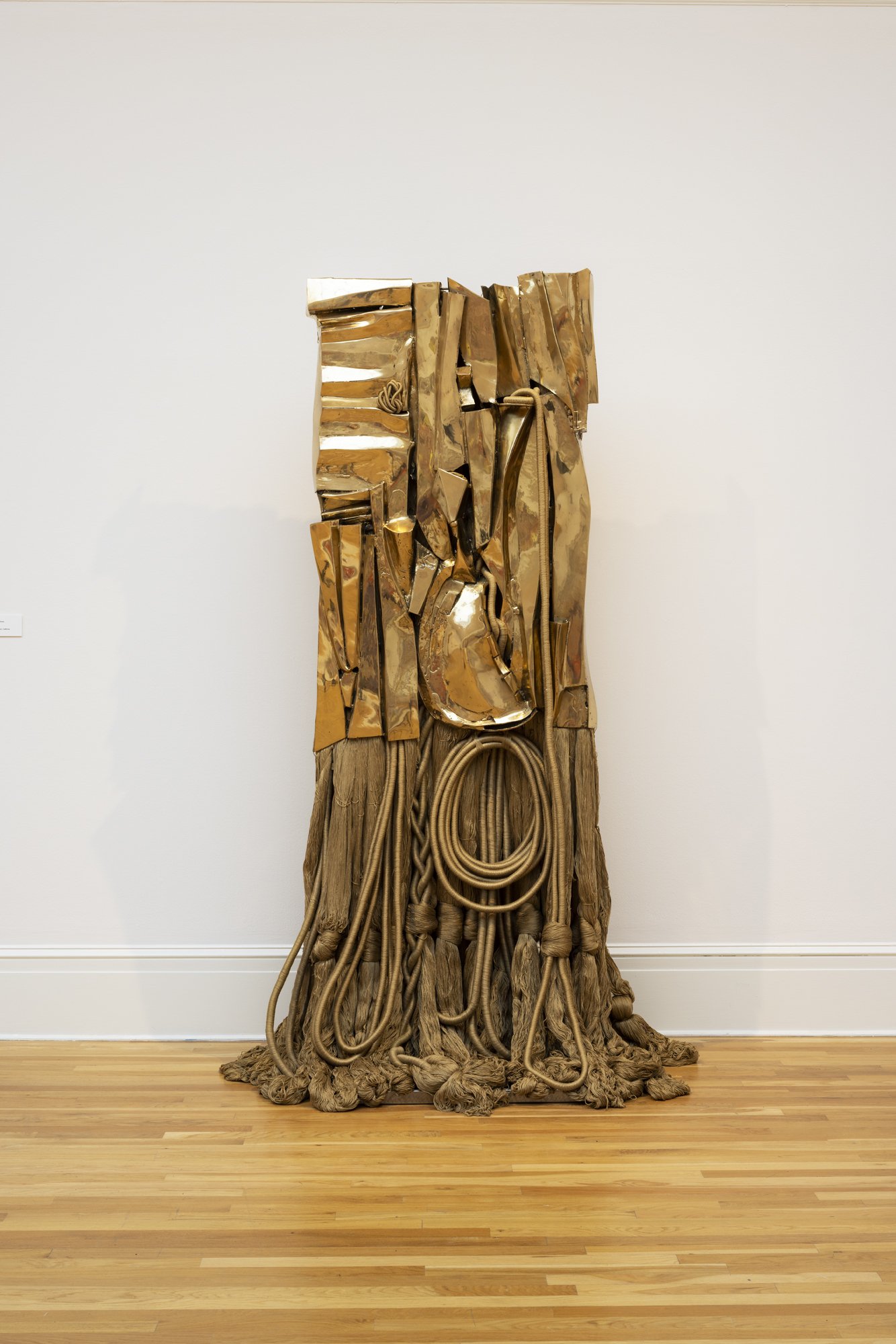
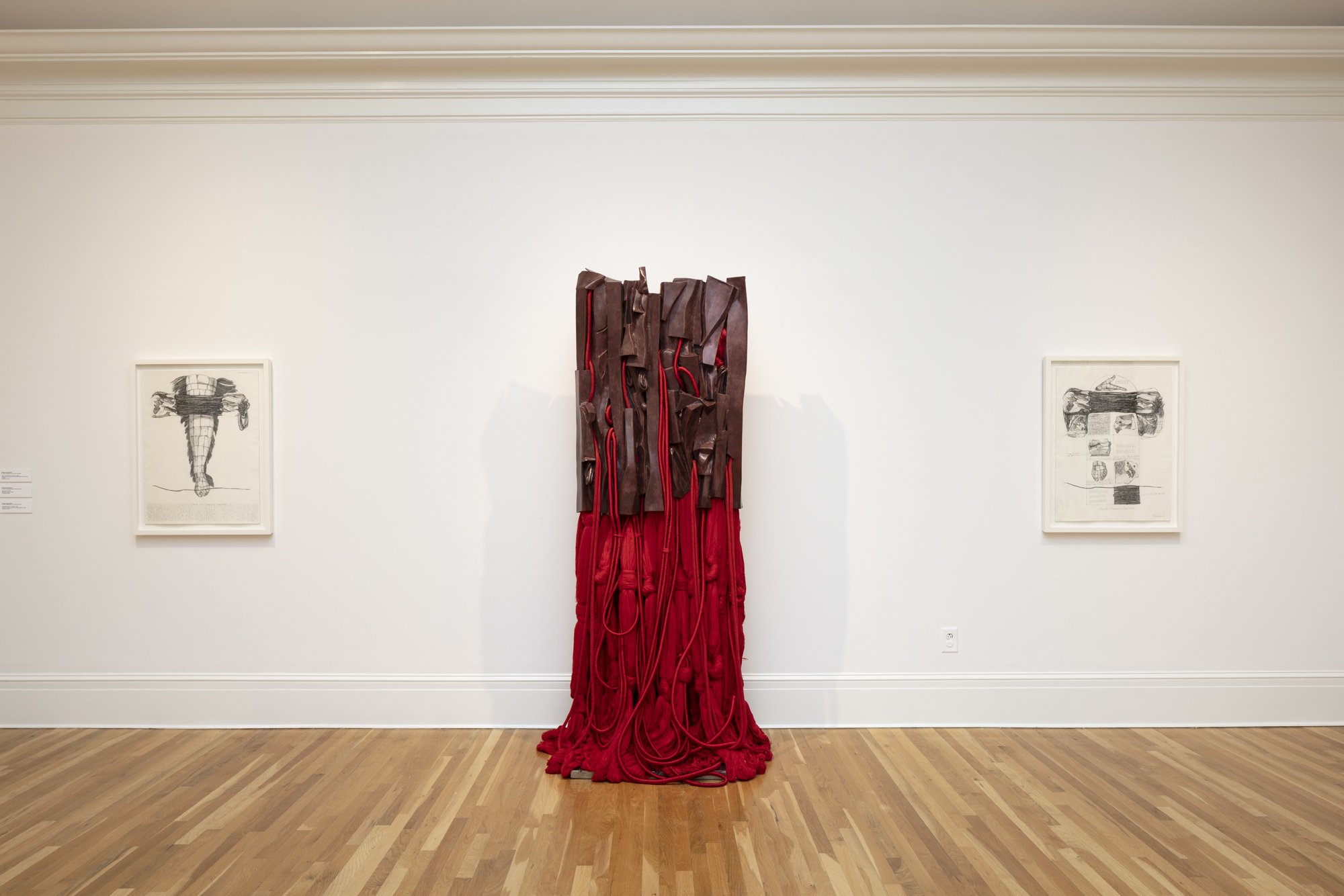
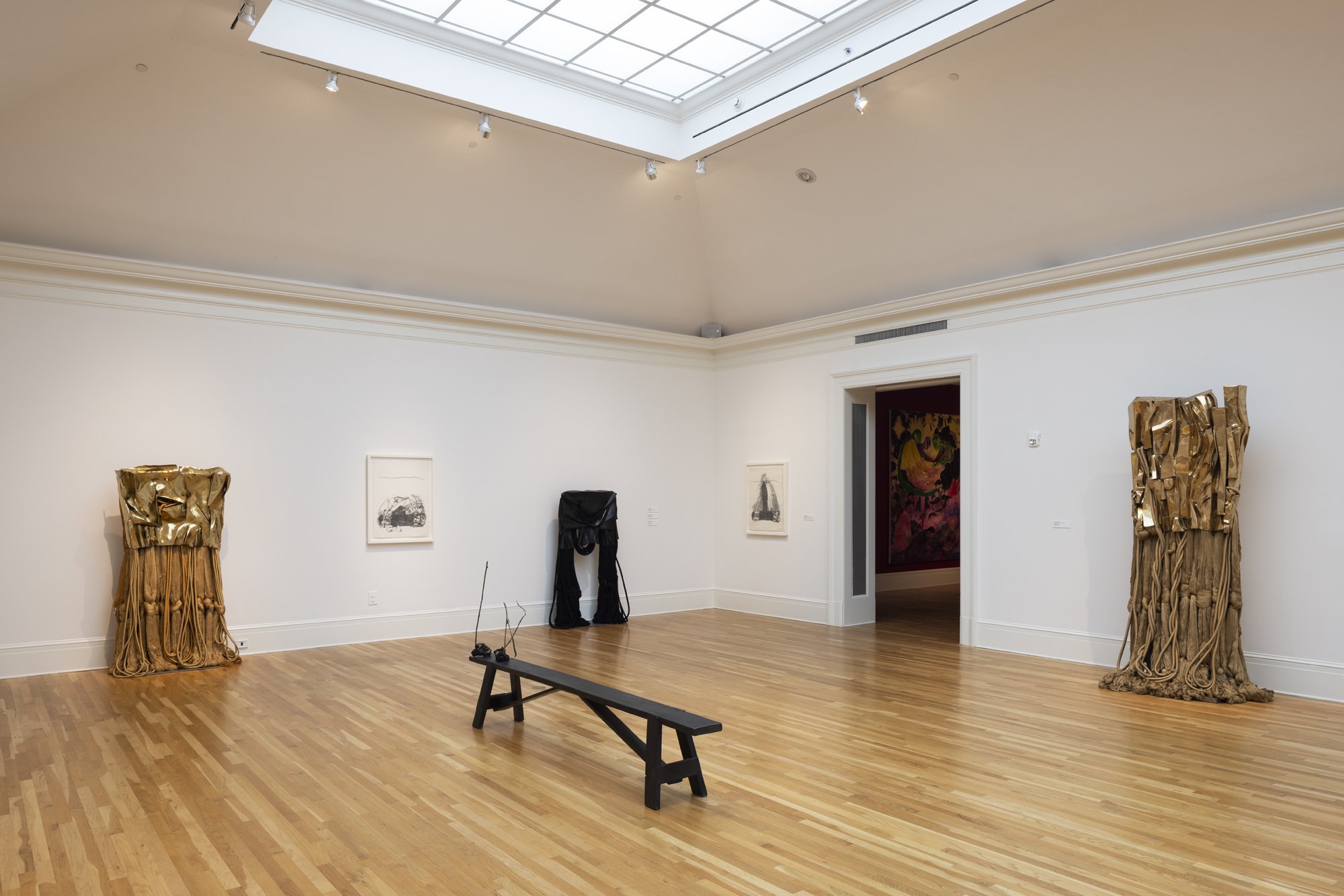
Barbara Chase-Riboud, 2021. Installation view: Prospect.5: Yesterday we said tomorrow, 2021–22. Newcomb Art Museum of Tulane University, New Orleans. Courtesy Prospect New Orleans. Photos: Alex Marks
Elliott Hundley
b. 1975, Greensboro, North Carolina
Lives in Los Angeles
venue
Newcomb Art Museum of Tulane University
Woldenberg Art Center #202, Newcomb Circle, New Orleans, LA 70118
Monday, closed
Tuesday–Friday, 10 AM–5 PM
Saturday–Sunday, 10 AM–4 PM
neighborhood
About the project
The Balcony, 2020–21
Encaustic, paper, plastic, pins, photographs, foam, and linen on panel
Courtesy the artist, Regen Projects, Los Angeles, and Kasmin, New York
Elliott Hundley’s work takes its title from a 1956 play of the same name, The Balcony, by Jean Genet. In Genet’s text, which is set in a brothel, men have come to play out sexual fantasies of social power, assuming archetypal characters, such as the Judge and the General. As the power structures in the outside world around them are overthrown, they attempt to assume their positions in the public sphere—an upside down universe of fantasy rendered real. Hundley’s work takes Genet’s play as a jumping-off point for questions of position and masquerade as they relate both to our recent national history and to New Orleans itself. What unfolds in this immersive mural is an intricate collage composed of hundreds of found images and original photographs that present a mass of people moving across its facade. A procession, a protest, a revolution—all of these gatherings are conjured in the space of this work. The suggestion of resistance, violence, pleasure, hysteria, and collective will are captured in the energy of these images and in the richly detailed surface the artist has created. Narrative scenes play out in the spaces demarcated by yellow encaustic, a kind of wax paint, while the larger world unfolds chaotically beyond, just as in the original play. In Hundley’s work, the space of the balcony—an iconic architectural feature in New Orleans—is both a narrative relayed in pictures, as well as a scene we might step into ourselves.
About The Artist
Literally and figuratively dense and deep, Elliott Hundley’s work mostly features elaborate, large-scale collages, which combine hundreds of intricate pieces, including photographs, print media, texts, beads, shells, and other found objects. His immersive works reflect narratives drawn from classical texts, ancient mythology, theater, and poetry while spanning vast periods of time, winding their way to the present day, where they often reference his southern heritage, family history, and contemporary social circle. He layers painting, sculpture, and found objects to create contained yet epic imaginary universes that recall the theatricality of the classical works that inspire him. Hundley’s work has been exhibited at numerous galleries in Los Angeles and New York, museums around the world, and is part of the permanent collections of the Museum of Contemporary Art, Los Angeles; Hammer Museum, Los Angeles; Pérez Art Museum Miami; Museum of Modern Art, New York; Whitney Museum of American Art, New York, and the Solomon R. Guggenheim Museum, New York. Hundley earned a BFA from the Rhode Island School of Design, Providence (1997), an MFA from the University of California, Los Angeles (2005), and studied at the Skowhegan School of Painting and Sculpture, Maine.

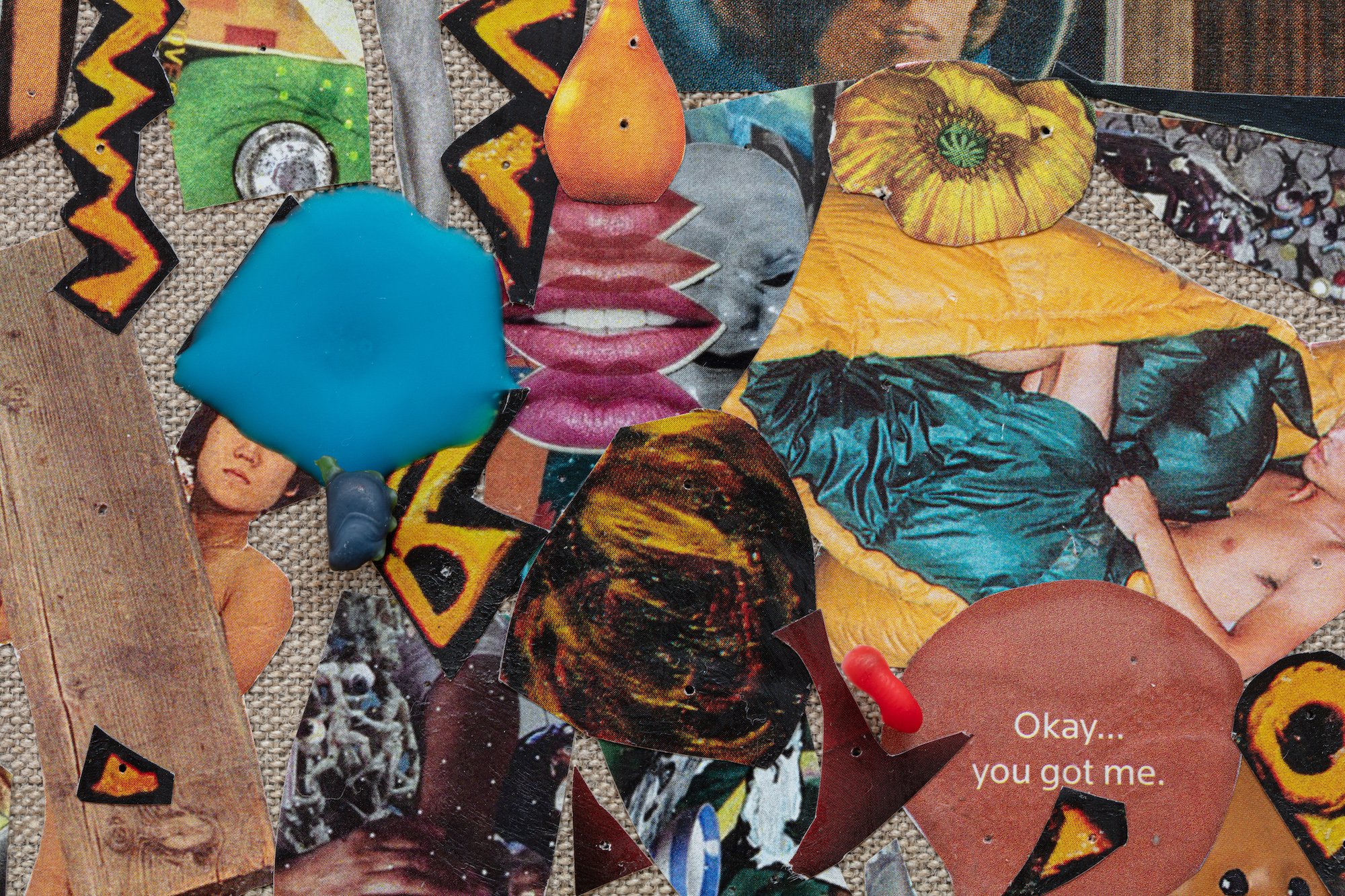
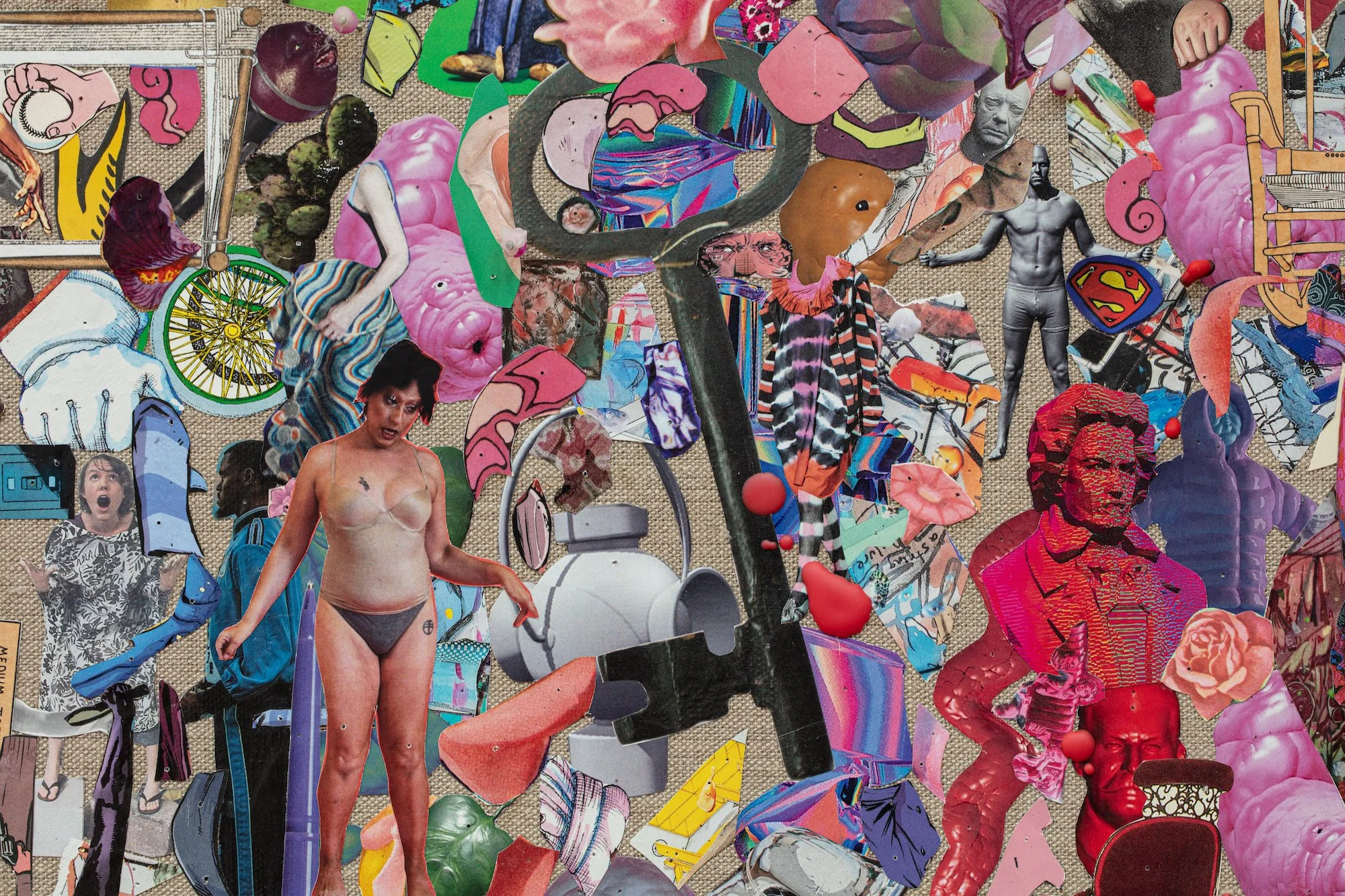
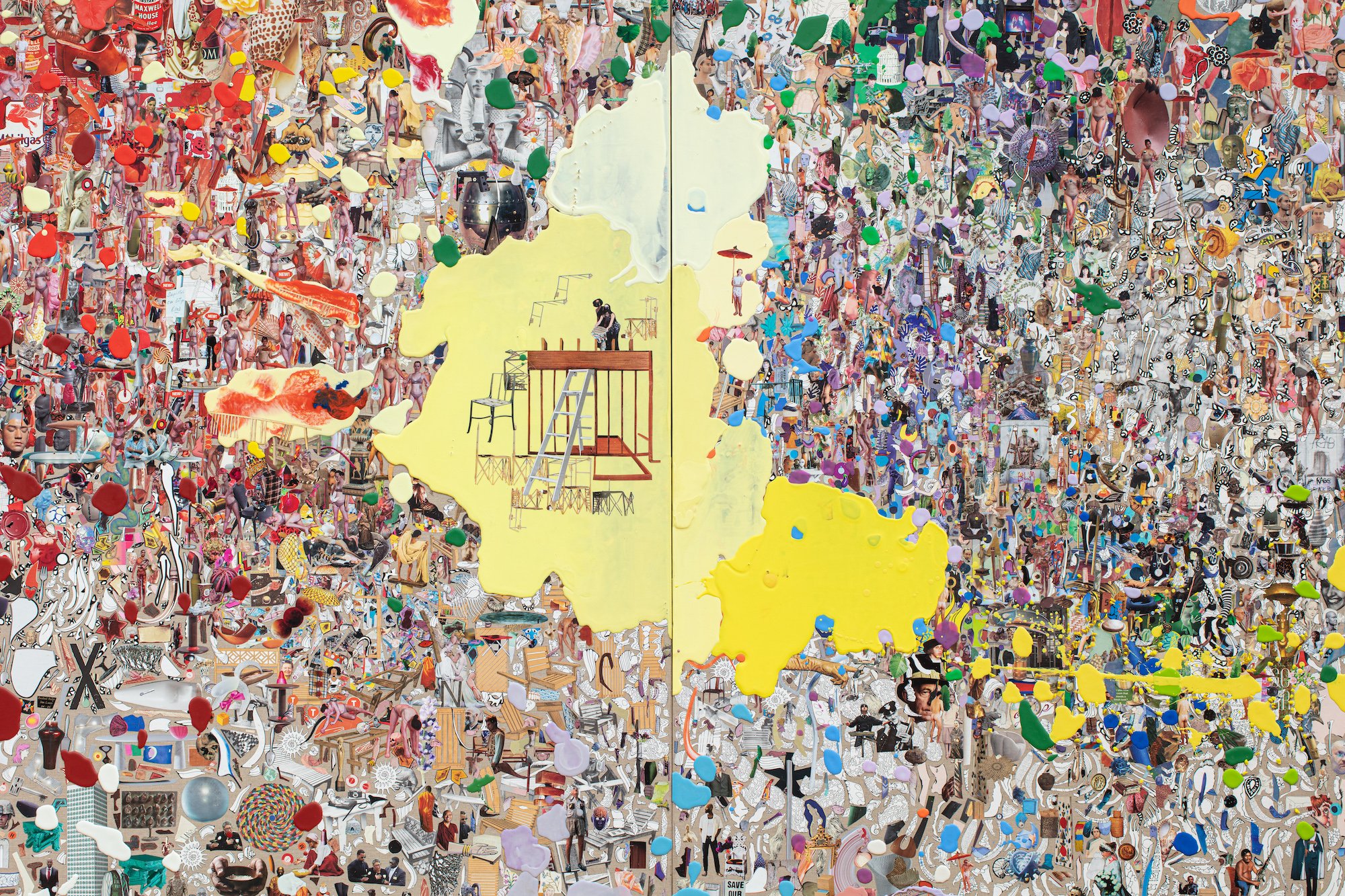
Elliott Hundley, The Balcony, 2020–21. Encaustic, paper, plastic, pins, photographs, foam, and linen on panel, 8 x 40 feet. Installation view: Prospect.5: Yesterday we said tomorrow, 2021–22. Newcomb Art Museum of Tulane University, New Orleans. Courtesy Prospect New Orleans. Photo: Alex Marks
Mimi Lauter
b. 1982, San Francisco
Lives in Los Angeles
venue
Newcomb Art Museum of Tulane University
Woldenberg Art Center #202, Newcomb Circle, New Orleans, LA 70118
Monday, closed
Tuesday–Friday, 10 AM – 5 PM
Saturday–Sunday, 10 AM – 4 PM
neighborhood
About the project
Mimi Lauter combines the natural, spiritual, and psychological in her bold abstractions. In this presentation of Lauter’s work, nearly recognizable forms composed of minute strokes of brilliantly colored soft pastels, dance across multipart works on paper and a large-scale canvas, among her first works to also use oil paint. Her theatrical compositions recall the reverential and grandiose nature of Italian operas from which some works take their titles, while her style evokes modernist aesthetics and pulls inspiration from Redon, Vuillard, Bonnard, as well as other members of the Nabis and Post-Impressionists. Color, gesture, and texture give form to these compositions which simultaneously suggest landscapes, flora, sunsets, seasons, and celestial bodies—natural cycles of life, death, rebirth. These sublime colorscapes are portals to other worlds and inner states, examples of imagined world-building and expressions of self. Like Ron Bechet’s charcoal drawing of live oaks, also on view at Newcomb, Lauter’s work infuses the familiar with the fantastic, revealing possibilities for the transcendent in the world that surrounds us.
about the artist
Originally from San Francisco, Mimi Lauter earned a BA from the University of California, Los Angeles, and an MFA from the University of California, Irvine. Lauter currently resides in Los Angeles, where she creates works on paper of widely varying scale, from the intimate to the expansive, with soft oil pastels in a saturated, riotous palette. Timeless imagery hints towards the figure, subconscious landscapes, plants and foliage, seas and skies, and the personal and universal. Her drawings nods to a European Modernist history with deep roots in religious and spiritual painting, from Medieval paintings and tapestries to the work of artists like Odilon Redon and Hilma Af Klint. Lauter’s work is included in the collections of the Hammer Museum, Los Angeles, and the Los Angeles County Museum of Art. Her solo exhibitions include Symphony No. 1, Blum & Poe, New York (2020); Apres Nous Le Deluge, Mendes Wood DM, São Paulo (2019); and Sensus Oxynation, Blum & Poe, Los Angeles (2018).
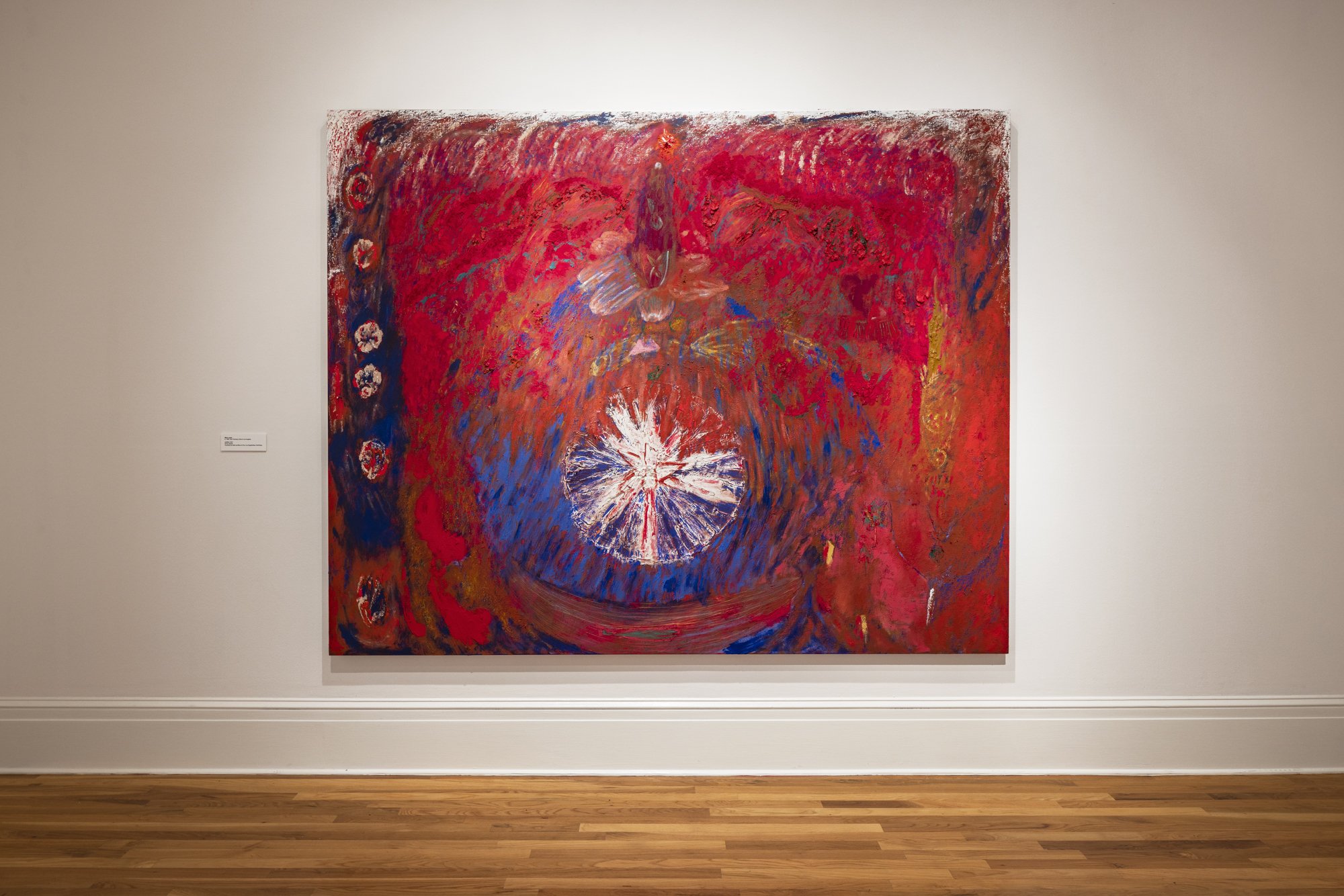
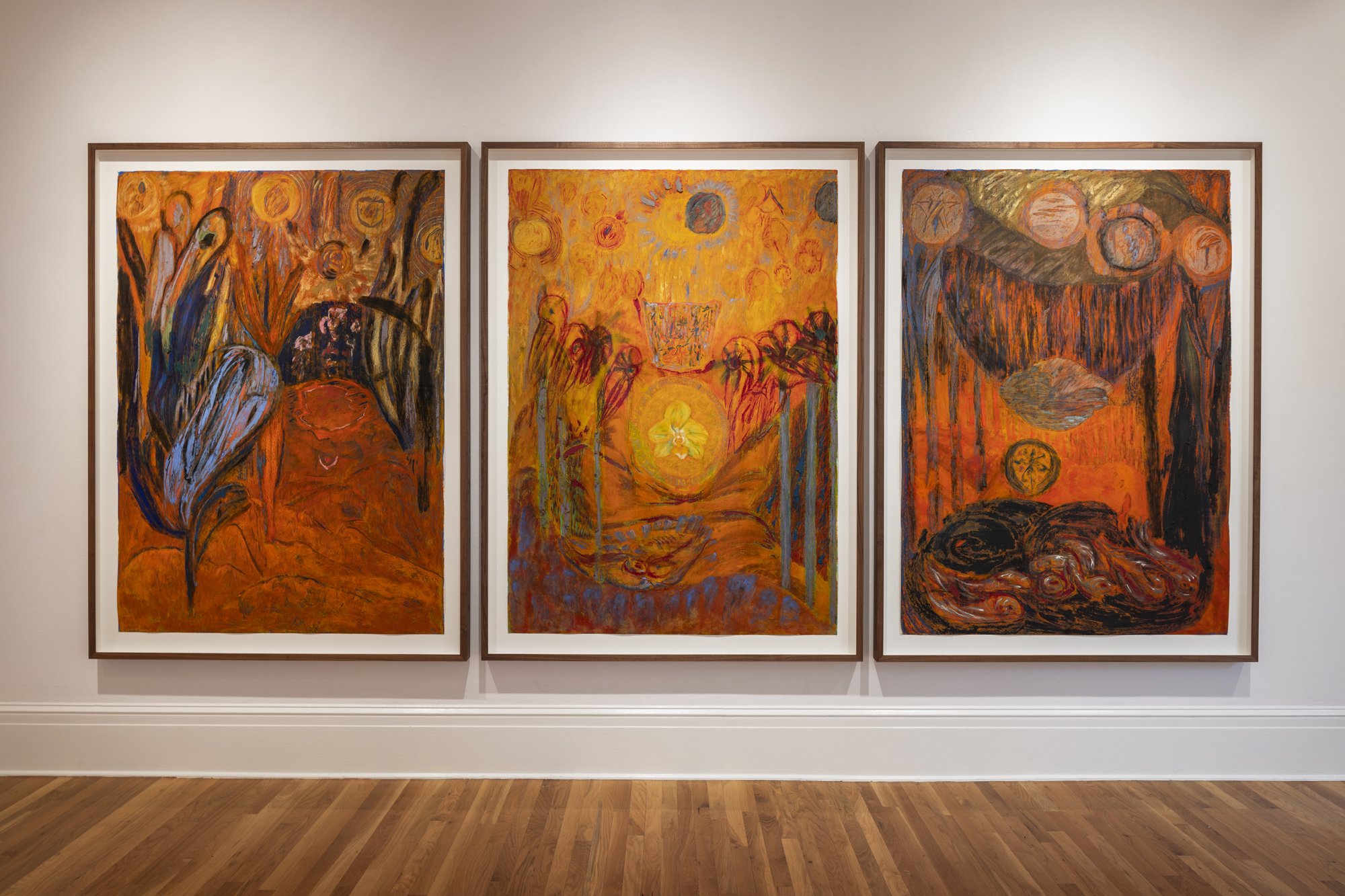
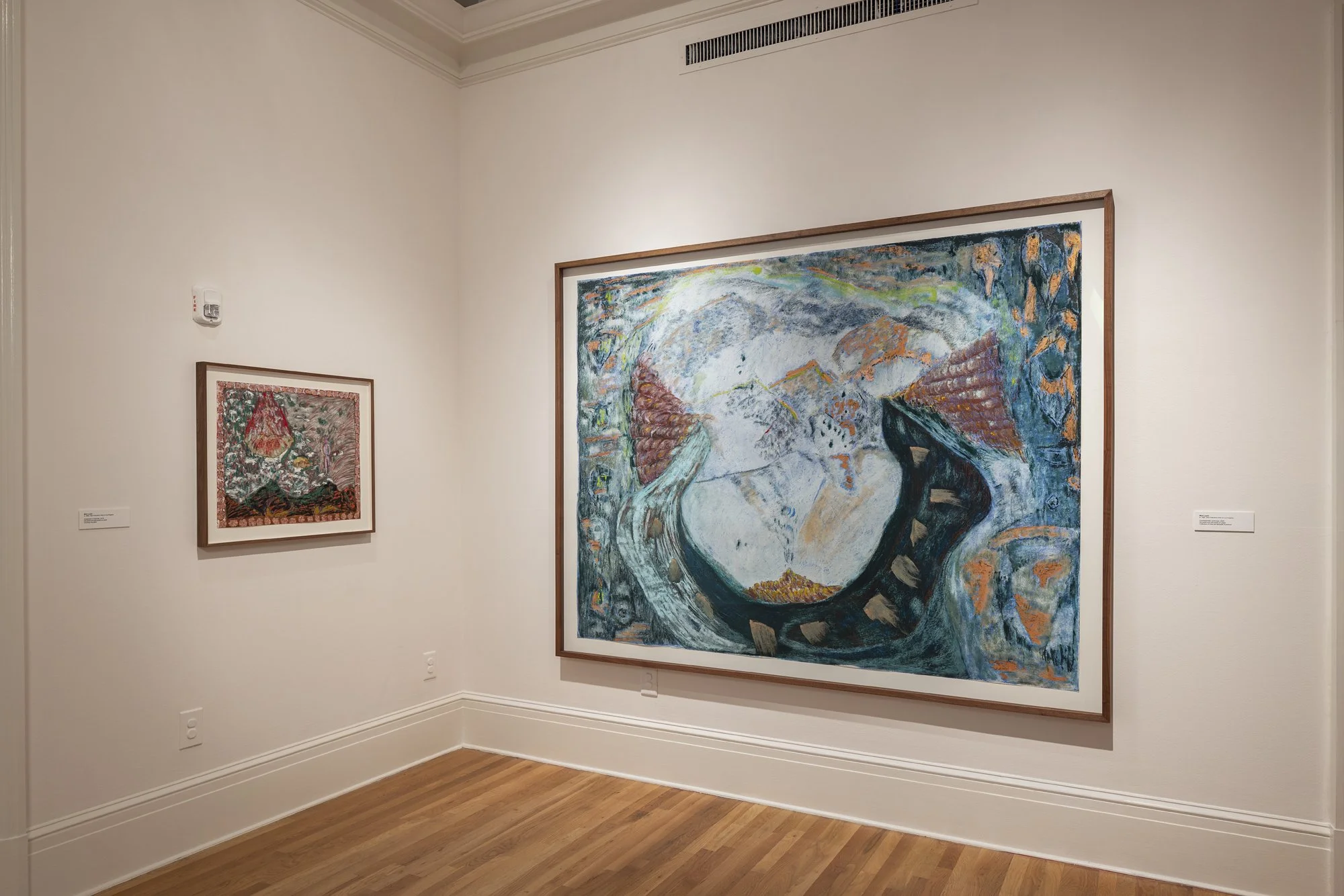

Mimi Lauter, 2021. Installation view: Prospect.5: Yesterday we said tomorrow, 2021–22. Newcomb Art Museum of Tulane University, New Orleans. Courtesy Prospect New Orleans. Photos: Alex Marks
Naudline Pierre
b. 1989, Leomister, Massachusetts
Lives in New York
venue
Newcomb Art Museum of Tulane University
Woldenberg Art Center #202, Newcomb Circle, New Orleans, LA 70118
Monday, closed
Tuesday–Friday, 10 AM–5 PM
Saturday–Sunday, 10 AM–4 PM
neighborhood
About the project
Don’t You Let Me Down, Don’t You Let Me Go, 2021
Oil on canvas
Courtesy the artist and James Cohan, New York
Naudline Pierre’s paintings employ rich and rigorous worldbuilding to imagine transcendent spaces for community and self. To view her work is to enter a realm ruled by supernatural forces. Suffused with rich color, Pierre’s vibrant worlds accommodate the pleasures and torments of her predominantly femme protagonists as they vie for power, connect with one another, and seek refuge.
Pierre’s largest painting to date, Don’t You Let Me Down, Don’t You Let Me Go brims with fiery winged figures resembling the harpies of classical mythology. Related but distinct moments sit side-by-side within this ethereal scene. For the first time in Pierre’s work, the central protagonist, who represents the artist’s alter ego, appears twice, suggesting both the complex inner lives of the figures and the mutable passage of time. The composition features figures taking to the cloud-laden air and plunging into watery depths, rendered with fine, translucent swirls of indigo. The overwhelming presence of water and allusions to fire recall the connective and transcendent qualities of the elemental forces that shape our reality through experience, movement, ritual, and geography.
about the artist
Naudline Pierre pulls the threads of the fabric of her religious upbringing and her personal history to weave evocative, supernatural visual tales in her paintings, which simultaneously innovate and adhere to the conventions of Western painting traditions. Pierre’s subjects have a mythological quality and often appear to be in the midst of action, but her paintings are infused with ambiguity and viewers may be uncertain if the subjects are arriving or departing, showing affection or engaging in violence, seeking intimacy or protection. Her work has been included in exhibitions at the Museum of Contemporary Art Chicago; the Armory Show, New York; and Shulamit Nazarian, Los Angeles, among others. Pierre’s works are in the permanent collections of the Pérez Art Museum Miami; Hammer Museum, Los Angeles; Dallas Museum of Art; Nasher Museum of Art, Duke University, Durham, North Carolina; and the Kemper Museum of Contemporary Art, Kansas City, Missouri. She earned a BFA from Andrews University, Berrien Springs, Michigan, and an MFA from the New York Academy of Art. Pierre will be an artist-in-residence at the Studio Museum in Harlem, New York, through September 1, 2020.
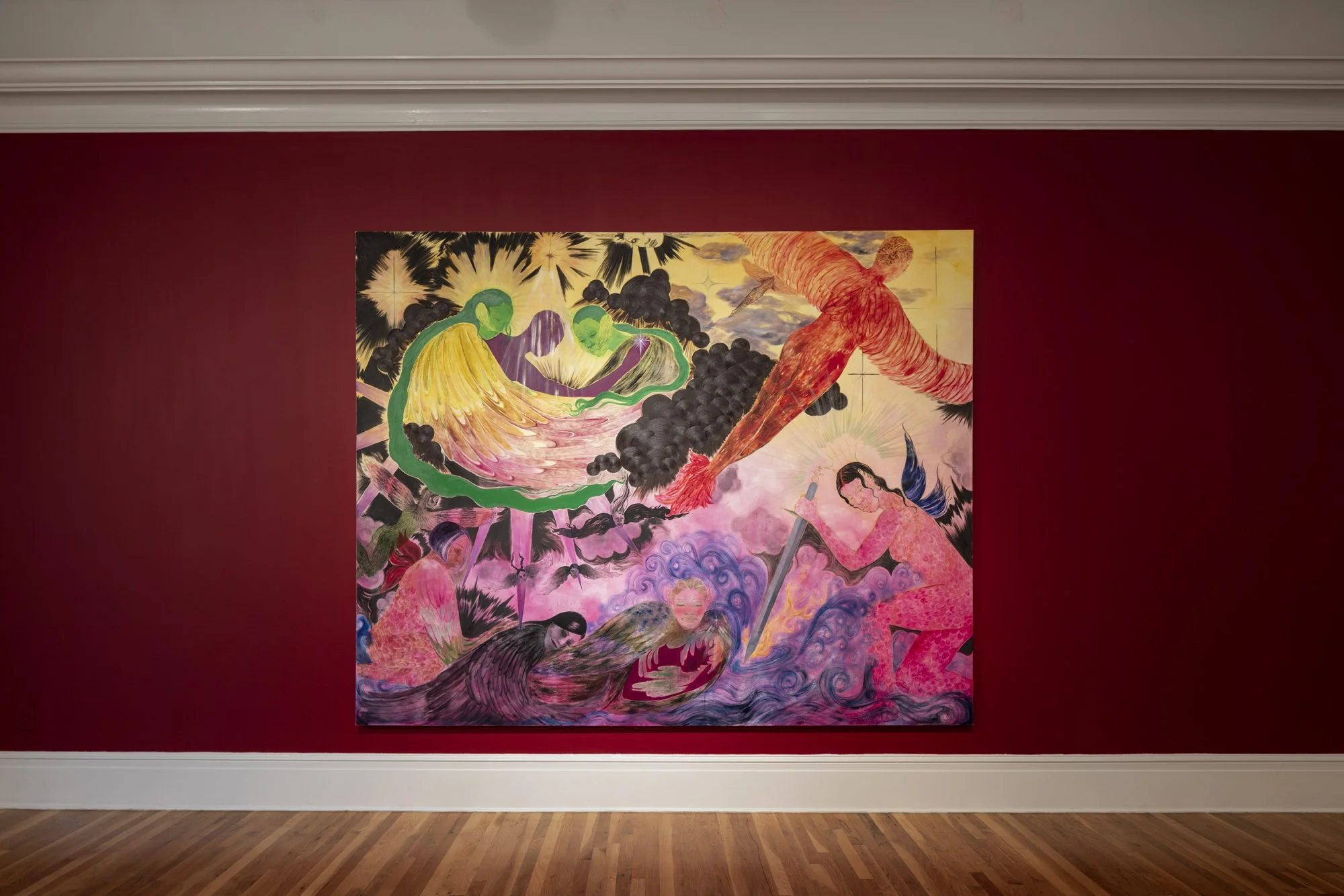
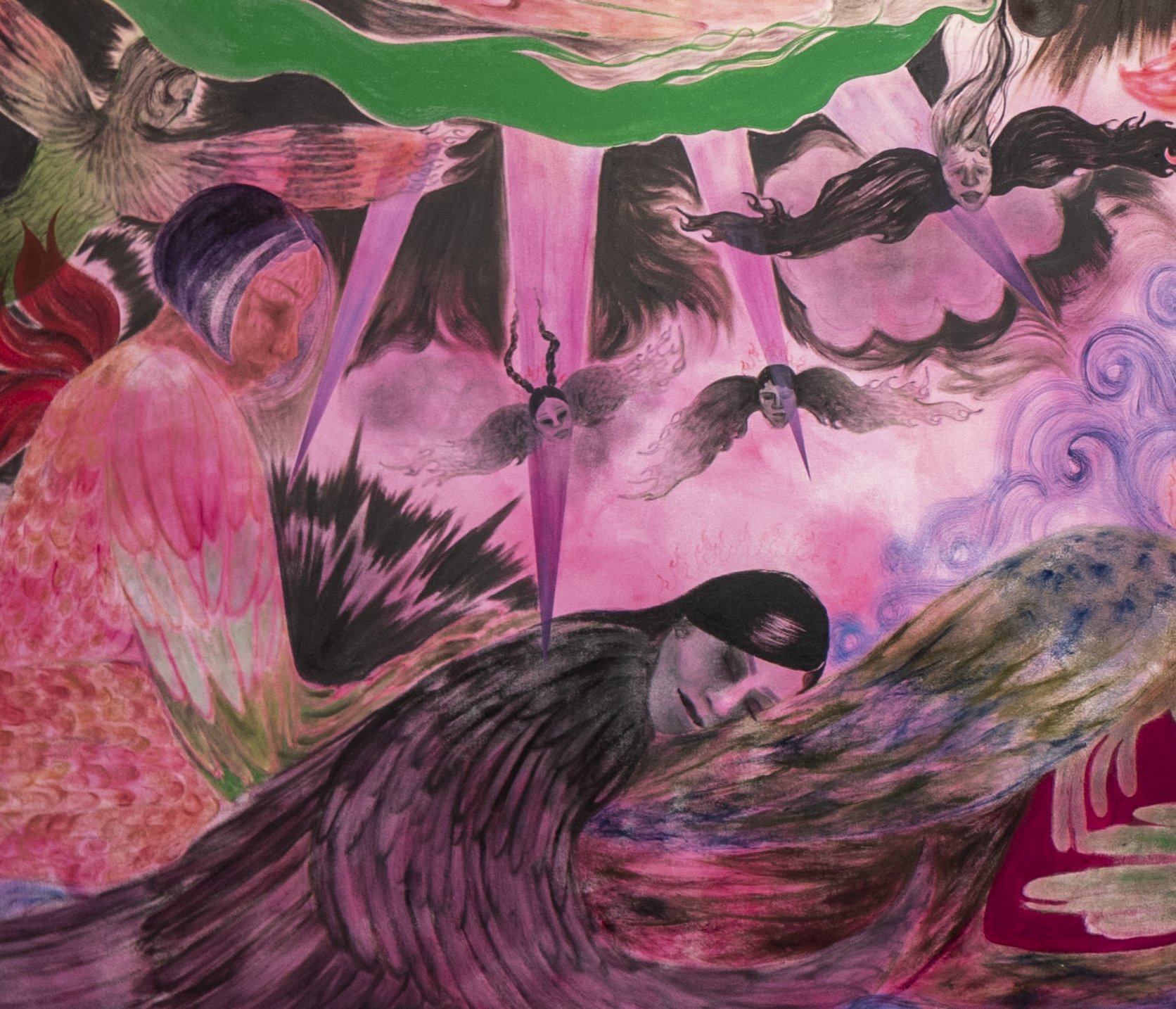
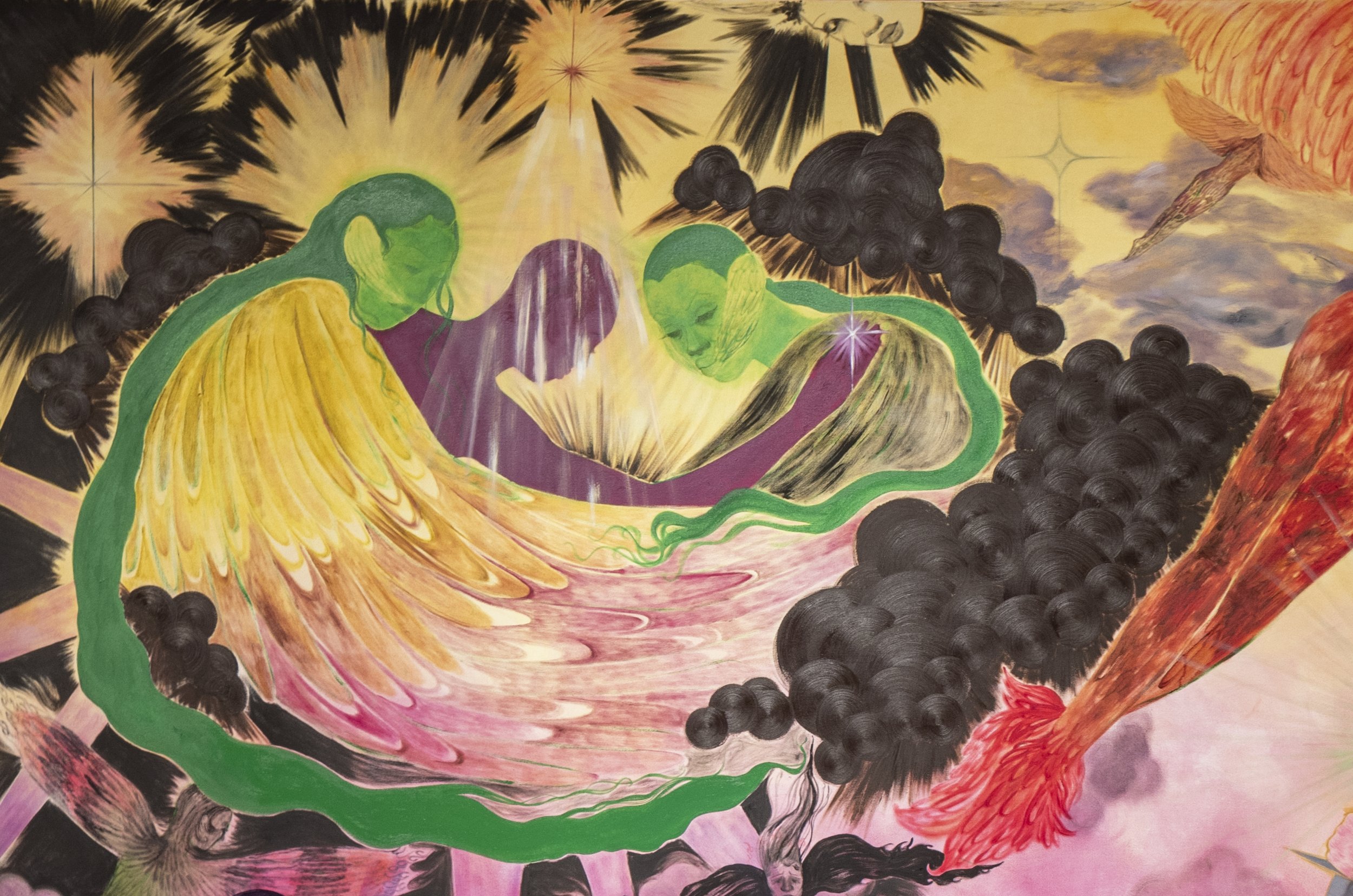
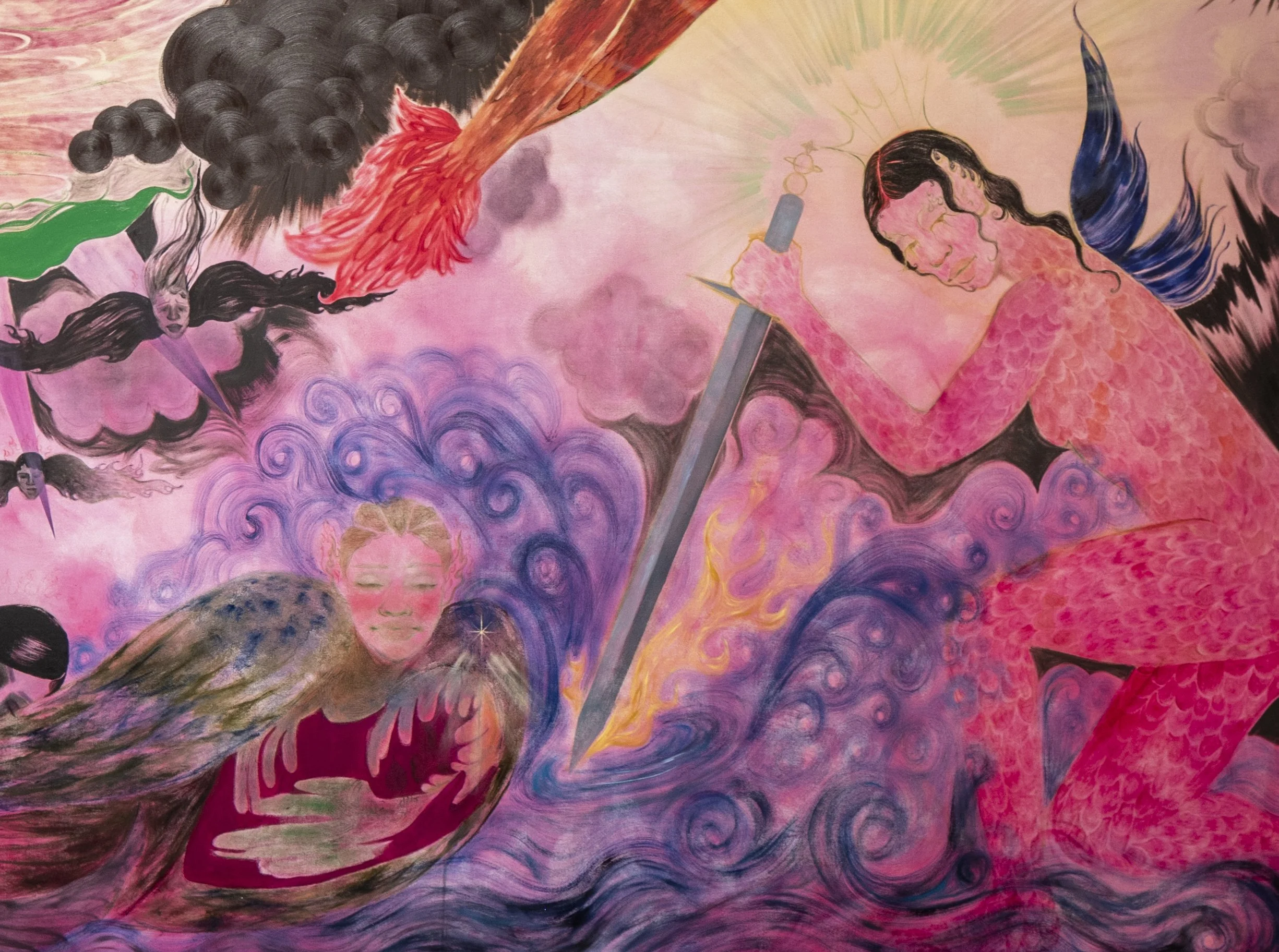
Naudline Pierre, Don’t You Let Me Down, Don’t You Let Me Go, 2021. Oil on canvas, 96 x 120 inches. Installation view: Prospect.5 Yesterday we said tomorrow, 2021–22. Newcomb Art Museum of Tulane University, New Orleans. Courtesy Prospect New Orleans. Photo: Alex Marks